Belleville (French: Belle ville, meaning “Beautiful city”) is a city in St. Clair County, Illinois, coterminous with the now defunct Belleville Township.[4] The population was 41,290 according to the Census Bureau’s 2018 estimates.[3]
It is the eighth-most populated city in the state outside the Chicago metropolitan area, and the most-populated city in the state south of Springfield. It is the county seat of St. Clair County,[5] and the seat of the Roman Catholic Diocese of Belleville and the National Shrine of Our Lady of the Snows.
Belleville is the most-populated city in the Metro-East region of the St. Louis Metropolitan Area and in Southern Illinois. Due to its proximity to Scott Air Force Base, the population receives a boost from military and federal civilian personnel, defense contractors, and military retirees.[citation needed]
History

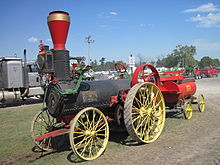
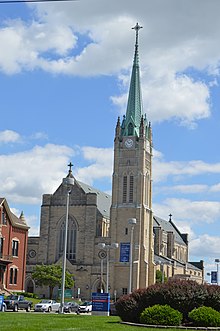
George Blair named the city of Belleville in 1814. Because Blair donated an acre of his land for the town square and an additional 25 acres (10 ha) adjoining the square for the new county seat, the legislature transferred the county seat from the village of Cahokia. The latter had been established by French colonists as a mission village in the late 17th century.
Belleville was incorporated as a village in 1819, and became a city in 1850. It is said that Blair named the city Belleville (French for “beautiful city”) because he believed that a French name would attract new residents. Major immigration in the mid-19th century to this area occurred following revolutions in Germany, and most of the European-American population is of German ancestry.
Many of the educated Germans fled their homeland after the failure of the German Revolution in 1848. Belleville was the center of the first important German settlement in Illinois. By 1870, an estimated 90% of the city’s population was either German-born or of German descent.[6]
After the Civil War, Belleville became a manufacturing center producing nails, printing presses, gray iron castings, agricultural equipment, and stoves. Belleville became known as “The Stove Capital of the World.” The first brewery in Illinois was established in Belleville. In 1868, Gustav Goelitz founded the candy company that is known today as “Jelly Belly.”[6]
An immense deposit (400,000 acres (1,600 km2)) of bituminous coal was found in St. Clair County. By 1874, some farmers had become coal miners. One hundred shaft mines were in operation in and around Belleville. The coal brought the steam railroad to town, which allowed for the transport of many tons of coal to be shipped daily from Belleville to St. Louis on the west side of the Mississippi River, for use in its industries, homes and businesses. Later, Belleville had the first electric trolley in the state.[6]
The first style of houses in Belleville were simple brick cottages, known locally as “German street houses” or “row houses.” Architectural styles flourished in greater variety, featuring American Foursquare, French Second Empire, Greek Revival, Gothic Revival, Italianate, Queen Anne, and Victorian.[7] The Belleville Historic District, which was listed on the National Register of Historic Places in 1976, comprises 73 contributing properties.[8]
The “Old Belleville Historic District,” was defined and recognized in 1974 and is the city’s first historic district.[7] The city also has designated two more historic districts: “Hexenbuckel” (est. in 1991) and “Oakland” (est. in 1995).[9]
Belleville’s early German immigrants were educated, with most of them having graduated from German universities. They were nicknamed “Latin Farmers” because of this. After 1836 Gustav Koerner contributed to establish the city’s public library. The Belleville Public Library is the state’s oldest, predating the Illinois State Library by three years. The German settlers also founded choral and dramatic groups, as well as literary societies. They established one of the first kindergartens in the country here.[6][7]
The National Civic League recognized Belleville in 2011 as one of the ten recipients of the All-America City Award.
Entertainment and performing arts
The Belleville Philharmonic Society was formed in 1866, making it the second oldest philharmonic orchestra in the country.[12] With the increase in black population and migrants from the South, musicians developed who played blues and jazz; later rock clubs were added to the scene.
Jay Farrar (now of Son Volt), Mike Heidorn, and Jeff Tweedy (now of Wilco) of the now-defunct alt country group Uncle Tupelo are from Belleville. Another major musician was Neal Doughty, keyboardist for 1970s rock band REO Speedwagon.
National Register of Historic Places
Belleville, Illinois
City
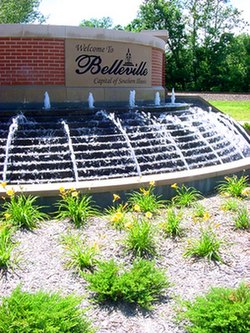

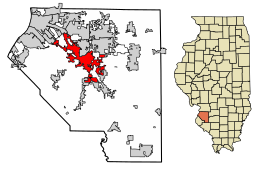
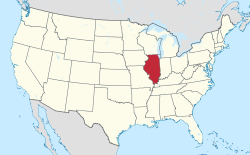
Coordinates
Country
United States
State
Illinois
County
Founded
Government
1814
• Mayor
Area
[1]
Total
Land
Water
Elevation
[2]
Population
(2010)
Total
Estimate
(2018)[3]
Density
Time zone
Summer (DST)
ZIP code(s)
Area code(s)
FIPS code
Wikimedia Commons
Website
Woemmel is a St. Louis based Plastering company with a concentration in Residential, Commercial, Ornamental, and Plater Repair.
Importance of Reliable Contractors
Quality Services
Reliable contractors offer a comprehensive range of plastering services, catering to both interior and exterior applications. They prioritize high-quality workmanship, using premium materials for durability. These contractors provide tailored solutions to meet the specific requirements of each client.
Trust and Safety
Contractors who are reliable prioritize safety above all else, adhering to strict protocols and guidelines on every project. They establish trust through transparent communication and consistent service delivery. Moreover, these professionals conduct thorough background checks on all employees to ensure trustworthiness.
Expertise Recognition
Reputable contractors showcase their expertise through industry awards and certifications, demonstrating their commitment to excellence. They collaborate with well-known organizations to enhance their credibility and recognition in the field. By staying updated on the latest industry trends, these contractors consistently maintain their expertise.
Hiring Process Overview
Screening Importance
Screening all staff members is crucial to ensure the quality and reliability of the workforce. Implement rigorous methods such as thorough interviews and skill assessments. Guarantee a trustworthy team through background verification checks.
Background Checks
Criminal Records
Maintain a safe working environment by enforcing a zero-tolerance policy for employees with criminal records. Regularly review criminal records to uphold company standards and reputation. Ensure clients’ peace of mind by verifying clean records for all employees.
Safety Measures
Implement strict safety measures to prevent accidents and promote a secure work environment. Conduct regular safety training sessions for all employees to enhance awareness. Adhere to industry safety regulations to sustain a safe workplace.
Specialization in Plaster Repair
Techniques Mastery
Plastering experts demonstrate mastery in various techniques like Venetian plaster and stucco. They continuously enhance skills through training programs and workshops. By utilizing innovative techniques, they achieve superior finishing results that set them apart.
Material Knowledge
With in-depth knowledge of different plastering materials, professionals recommend suitable options based on project requirements and client preferences. They source high-quality materials from trusted suppliers to ensure optimal results for every project.
Benefits of Professional Plastering
Durability and Aesthetics
Professional plastering companies in Belleville focus on achieving a balance between durability and aesthetics. They ensure that every project enhances the visual appeal of the space. By prioritizing durability, they guarantee long-lasting and aesthetically pleasing results.
Plastering experts understand the importance of balancing durability with aesthetics. Their work not only looks good but also stands the test of time. With their expertise, they can transform any space into a visually appealing and durable environment.
In every project, professional plastering services aim to enhance both the durability and aesthetics of the space. This approach ensures that clients not only get visually pleasing results but also enjoy long-lasting quality.
Value Addition
Professional plastering services in Belleville add significant value to properties by enhancing their overall appeal. By offering cost-effective solutions, these companies provide long-term value for their clients. Through high-quality plastering work, they help increase property resale value significantly.
Clients benefit from expert plastering services as it adds substantial value to their properties. The cost-effective solutions provided by professional plastering companies ensure that clients receive long-term benefits from their investment.
Expert plastering work doesn’t just enhance the appearance of a property; it also adds tangible value to it. By focusing on quality and longevity, professional plastering services help clients maximize their property’s resale potential.
Ensuring Contractor Trustworthiness
Background Verification
Conduct thorough background verifications on all employees to ensure credibility. Verify past work experience and qualifications to guarantee expertise. Maintain a database of verified employees for transparency and trust.
Thoroughly check employee backgrounds
Verify past work experience
Maintain a database of verified employees
Certification and Licensing
Hold relevant certifications and licenses to operate as a professional plastering company. Comply with industry standards and regulations to ensure quality service delivery. Regularly update certifications to stay current with industry best practices.
Obtain relevant certifications and licenses
Adhere to industry standards
Update certifications regularly
Expertise in Plastering Services
Skillset and Experience
A plastering company in Belleville must possess a diverse skill set covering various techniques like skim coating, Venetian plaster, and stucco application. With years of experience, they refine their craft by continuously learning new trends and methods. This blend of experience and adaptability ensures the delivery of exceptional results on every project. Past successful projects serve as evidence of their expertise, showcasing their ability to handle different challenges with finesse.
Project Portfolio
The hallmark of a reputable plastering company lies in its project portfolio, reflecting a wide array of completed works across residential, commercial, and industrial settings. By featuring successful projects in each sector, the company demonstrates its versatility and proficiency in catering to diverse client needs. The inclusion of before-and-after photos further enhances transparency and credibility, providing tangible proof of the remarkable transformations achieved through their skilled craftsmanship.
Safety Measures in Contracting
On-site Protocols
Follow strict on-site protocols to maintain efficiency and professionalism. Coordinate effectively with clients to minimize disruptions during the project, ensuring a smooth workflow. Implement clear communication channels to address any on-site issues promptly, fostering transparency and trust.
Equipment and Tools
Utilize advanced equipment and tools to ensure precision and efficiency in plastering work. Regularly maintain and upgrade equipment to meet industry standards, guaranteeing optimal performance. Invest in cutting-edge tools to deliver high-quality results consistently, showcasing expertise and commitment to excellence.
Why Choose Local Contractors
Community Engagement
Local contractors in Belleville engage with the community by participating in sponsorships, events, and charitable initiatives. By supporting local causes, they establish a strong presence and connection within the neighborhood. This involvement not only benefits the community but also helps in creating a positive reputation for the company.
They actively support community projects to give back and show appreciation for the support received from residents. Through these efforts, local contractors demonstrate their commitment to making a difference beyond their business operations. By contributing to various initiatives, they showcase their dedication to improving the local area.
Collaboration with other local businesses is key for contractors to foster a sense of unity and mutual support within the community. By working together on projects or referrals, they strengthen relationships and create a network of support. This collaboration not only benefits the businesses involved but also enhances the overall community spirit.
Quick Response Time
Local contractors prioritize prompt responses to client inquiries and project requests to ensure efficient service delivery. By being readily available to address queries, they demonstrate their commitment to excellent customer service. This quick response time sets them apart by showing dedication and attentiveness to clients’ needs.
Maintaining efficient communication channels is crucial for local contractors to address urgent requirements swiftly. By utilizing various communication tools such as phone calls, emails, or messaging apps, they ensure seamless interactions with clients. This streamlined communication process enables them to provide timely updates and information throughout the project.
Offering flexible scheduling options is another advantage of choosing local contractors. They understand that clients have diverse timelines and commitments; hence, they provide customizable scheduling solutions. This flexibility allows homeowners to plan their projects according to their convenience while ensuring that deadlines are met efficiently.
Future of Plastering in Belleville
Industry Trends
Plastering companies in Belleville need to stay updated on the latest industry trends to remain competitive. Attending conferences and workshops is crucial for learning about emerging techniques. Implementing new trends allows companies to provide clients with modern plastering solutions.
Embracing innovation is key for plastering companies in Belleville to thrive. By exploring new techniques and materials, companies can differentiate themselves. Creativity and experimentation are essential to offer unique solutions tailored to each client’s needs. Collaboration with industry experts fosters idea exchange, ensuring companies stay innovative.
Innovation and Techniques
To excel in the plastering industry, companies in Belleville must foster a culture of innovation. By exploring cutting-edge techniques, businesses can set themselves apart from competitors. Encouraging creativity among employees enables them to deliver personalized solutions that meet clients’ specific requirements.
Collaborating with industry experts is beneficial for plastering companies in Belleville. By engaging with professionals in the field, companies can gain insights into the latest innovations and techniques. This collaboration also provides opportunities for knowledge sharing and staying at the forefront of advancements in the plastering industry.

Closing Thoughts
In your quest for the best plastering company in Belleville, you’ve learned the crucial factors to consider when hiring contractors. By focusing on expertise, trustworthiness, and safety measures, you can ensure a successful plastering project that meets your needs. Choosing local contractors not only supports the community but also provides you with specialized services tailored to your area.
As you look towards the future of plastering in Belleville, remember the benefits of professional plastering services. Make informed decisions based on reliability and quality to guarantee a smooth and efficient project completion. Trust your instincts and the knowledge gained here to secure the best outcomes for your next plaster repair or installation endeavor.
Frequently Asked Questions
Is it important for homeowners to hire a reliable plastering company in Belleville that guarantees quality workmanship and customer satisfaction?
It is crucial to hire a reliable plastering company in Belleville for quality work, timely completion, and peace of mind. Reliable contractors ensure professionalism, expertise, and adherence to safety standards.
What are the pros of hiring professional plastering services in Belleville for homeowners and business?
Professional plastering services in Belleville offer superior craftsmanship, efficient project management, use of high-quality materials, and timely completion. They guarantee long-lasting results and enhance the aesthetic appeal of your property.
How can I ensure the trustworthiness of a plastering contractor in Belleville?
To ensure the trustworthiness of a plastering contractor in Belleville, check their credentials, read reviews from past clients, ask for references, verify insurance coverage, and clarify all project details in a written contract. Communication and transparency are key.
Why should I choose local contractors for my plastering needs in Belleville?
Choosing local contractors for your plastering needs in Belleville ensures quick response times, personalized service, knowledge of local building codes, community reputation, and easier communication. Supporting local businesses also strengthens the local economy.
What safety measures should I expect from a contracting company in Belleville?
A reputable contracting company in Belleville should prioritize safety by following industry best practices, providing proper training to employees, using safety equipment on-site, conducting regular inspections, and complying with regulations to ensure a secure working environment.

